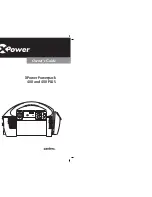
workpiece.
If you wish to make a deep cut it is best to do this
in 2 or 3 stages. The triple depth stop, can be used
for this purpose by making small variations in the
3 positions available.
6. VARIABLE SPEED CONTROL SWITCH
(see
fig10)
The variable speed control switch allows you to
vary the speed of the router enabling the optimum
speed to be selected for various size of router
bits and to avoid the workpiece being burnt,
this can occur especially when cross cutting. The
speed increases as you turn the switch towards
the higher numbers and decreases on the lower
numbers (1 being slowest and 6 fastest).
7. STARTING THE ROUTER
(see fig11)
Note:
Before starting work make sure workpiece
is firmly secured.
To start the router, press in lock off button with
thumb then close upon on/off switch (see fig11).
hold the two handles firmly and let the router
reach full operation speed, lower the router to
its working position, lock router with plunge lock
lever. Move smoothly through workpiece.
Release switch and lock lever, allow router to
return to top starting position. Let the router stop
fully before removing from workpiece.
Note:
Stop the router before adjusting the
variable speed.
Direction of feed
(see fig13 and fig14)
The router rotates in a clockwise direction, as a
consequence the router must be moved left to
right as you face the workpiece and anti-clockwise
for outside edges.
Rate of feed
It is important to move the router at the correct
speed through the work. The incorrect speed may
produce a poor quality cut. Moving too fast can
cause bit damage and a rough uneven cut.
A too slow speed can cause the wood to burn
and the bit to overheat. The rate of feed will
vary depending on the size of bit, material and
router speed. To determine the best speed always
practice on a small unseen area or a spare piece
of the same material first.
8. USING THE ROUTER FREEHAND
The router can be used without any of the
Fig 9
Fig 10
Fig 11
Fig 12







































